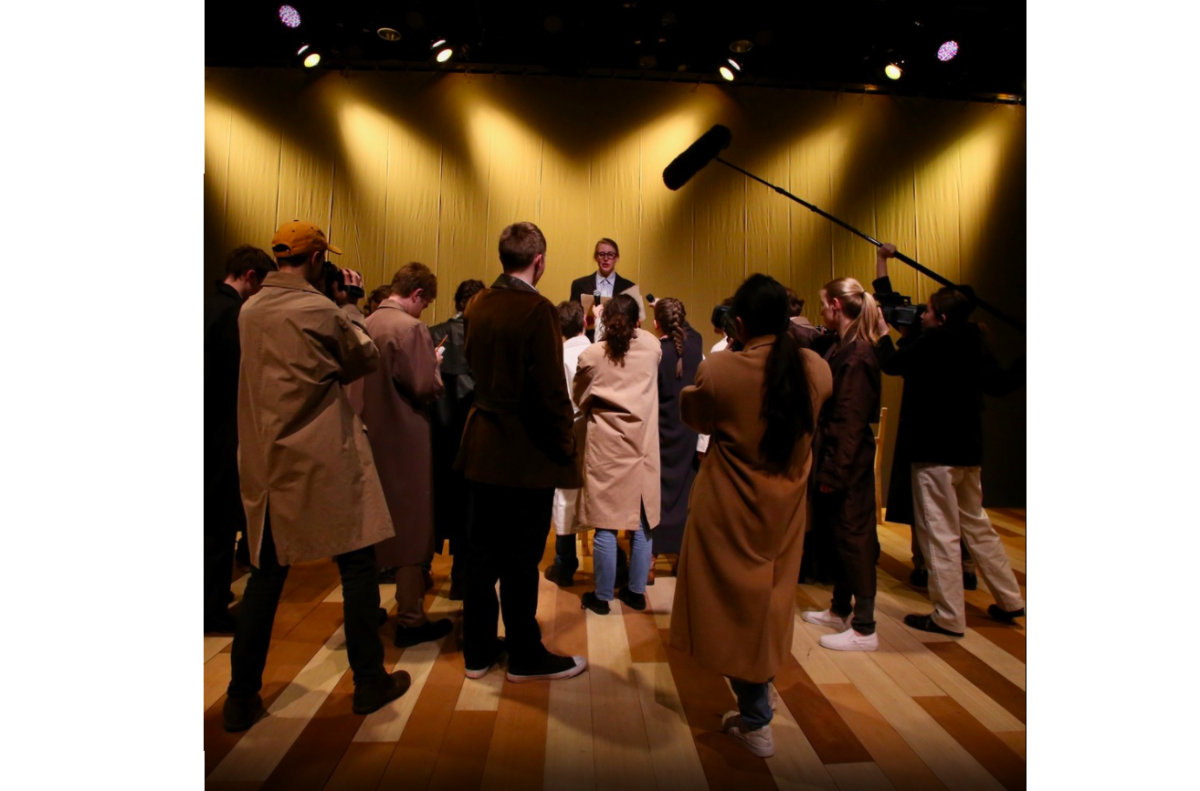One of the things I love the most about seeing plays is watching how so many pieces come together at the perfect moment to create a story. Each light, sound queue, line, movement and prop has their own purpose and specific moment on stage.
When I go see professional plays, I really enjoy them. However, I don’t connect or resonate with them like I do when I see plays at school. When I am able to see my peers transform and portray a completely different character, I not only enjoy the piece more, but also feel immensely proud of their dedication to the role and the play itself.
I have seen multiple plays at WIS over the past few years. Each year, I walk out of the Black Box amazed at how each of the little pieces that the cast and crew have poured so much thought and time into the production, have come together to create two hours worth of incredible entertainment. Although entertainment is a driving factor as to why one sees a play, the plays at WIS allow the audience to reflect on, inquire into and get involved with the story.
Now that I have explained why I specifically love WIS plays, I want to reflect on the most recent play: The Laramie Project. The reason why I want to discuss this play is because, like I said before, I think that one of the most moving things about the plays at WIS is how the characters and stories resonate with the viewers. The Laramie Project sparked an interest in me and to many to continue the conversation regarding how we treat others and to discuss how this play was able to change or reinforce our own perspectives on current issues in such a profound yet simple way.
The play dealt with the actual murder of Matthew Shepard, a gay student at the University of Wyoming, near Laramie, Wyoming, which was denounced as a hate crime. However, it focused equally on the events that led up to the murder and the events that followed, exposing the existing homophobia in Laramie. By doing such, the message of the play developed into not just an interpretation of the horrendous murder that occurred, but how certain actions built up to it and how the community coped with it.
Like I said, the depiction of the story was done in simple yet thoughtful way. The stage itself which consisted of wood paneled floors, a couple of basic wooden furniture pieces such as a benches and chairs and a plain white backdrop allowed the audience to really focus on the characters and their words instead of an over the top and complex set.
Regarding the clothing, it was very simple and subtle as well, appropriately portraying the 90’s style which is when the events that the play is based on took place. As the outfits consisted of mainly jeans, t-shirts and sneakers, they really emphasized how the events that occured in Laramie, Wyoming in 1998 did happen and that stories that seem very distant and unbelievable, like this one, are actually very real and possible.
One of the biggest aspects of the production that distinguished the Laramie Project from other plays I have seen is that there wasn’t a “lead” or main character. Each cast member had equal importance, especially since almost everyone played at least 2 characters. I think that this part not only shows the wide range of abilities of each of the student actors, but it also proves that the play didn’t need a ton of people, props or an overproduced set to get the message across. Each role was an equally important role, thus emphasizing the importance of each person involved in the murder of Matthew Shepard.
Overall, I strongly believe that The Laramie Project was a one-of-a-kind production which successfully transmitted the story of what happened in Laramie, Wyoming in 1998. From the set, to the clothing to the characters, The Laramie Project was subtle and simple, but simultaneously packed with emotion and intensity.
By: Holden Davitian

































































